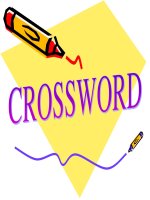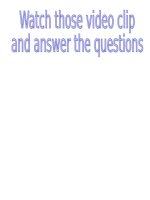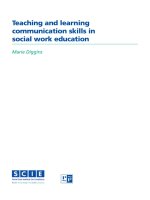Explicit discourse structure teaching and implicationsfor reading instruction
Bạn đang xem bản rút gọn của tài liệu. Xem và tải ngay bản đầy đủ của tài liệu tại đây (278.32 KB, 8 trang )
Hue University Journal of Social Science and Humanities
ISSN 2588–1213
Vol. 127, No. 6B, 2018, Tr. 39–46, DOI: 10.26459/hueuni-jssh.v127i6B.4472
EXPLICIT DISCOURSE STRUCTURE TEACHING
AND IMPLICATIONSFOR READING INSTRUCTION
Do Thi Xuan Dung1*, Truong Thai Chan2
Hue University, 3 Le Loi St., Hue, Vietnam
1
Universityof Foreign Languages, Hue University, 57 Nguyen Khoa Chiem St., Hue, Vietnam
2
Abstract. EFL reading teachers and researchers have searched for effective methods to equip learners with
efficient reading strategies, one of which concerns awareness-raising and exploration of discourse structures. That means making students metacognitively aware of strategies and techniques that promote reading comprehension in terms of the macro-level characteristics of the text. Research has pointed out the
indispensable roles of text structure knowledge in promoting an efficient strategy that enhances reading
comprehension. This paper reports the results of a project on explicit discourse structure teaching and its
effects exploration.On the basis ofthe theoretical framework offered by researchers in the world, a pilot
college reading course was carried out with the deliberate instruction of discourse structures and discourse awareness-raising activities towards differenttext patterns, transitional words, frame markers, and
signalling languages inone semester. The results demonstrated that the metacognitive awareness of discourse structure and the explicit teaching of textual features facilitate students’ reading comprehension.
The implicationshave also been used to devise methodsto reinforce the possible application of discourse
knowledge instruction in the tertiary language classrooms at a more metacognitive level.
Keywords.text structure, discourse structure, reading instruction, teaching reading skills
1.
Introduction
There has been an increasing need forforeign languages learning and acquisition all over
the world in the trend of globalization in the past decades. Inlearning a foreign language, learners are expected to master four language skills while enriching their knowledge of vocabulary,
grammar and pronunciation. Reading comprehension, especially in the tertiary education setting, has been an essential skill for job-related tasks in the future. Therefore, both teachers andlearners of English as a Foreign Language (EFL) strive for strategies thatenhance effective
reading comprehension.
Regarding effective reading strategies, many language researchers and practitioners have
outlined many kinds of categorization, characteristics and possible application in language
classrooms all over the world (Kern, 1989; Carrel, Pharis, and Liberto, 1989; Grabe, 2009). These
* Corresponding:
Submitted:08–09–2017; Revised: 18–09–2017; Accepted: 04–10–2017.
Do Thi Xuan Dung, Truong Thai Chan
Vol. 127, No. 6B, 2018
authors have discussed the positive results of explicit teaching reading strategies and the improvements in reading comprehension capabilities of EFL learners, and claim that there are
several ways to approach teaching reading through discourse-structure awareness instruction,
for instance,types of genres, signalling/ discourse markers, or graphic organizers.On the basis
ofthese theoretical frameworks, an application has been devised for the second-year Englishmajor reading classes of University of Foreign Languages, Hue University, Vietnam(HUFL) to
investigate the effects of explicit discourse structure teaching on changing their perceptions
about reading. This article reports the results of the project.
2. Theoretical framework
2.1.Definitions of discourse structure
Discourse structure, or text structure, refers to the coherent organization of information
within a written text. Meyer and Rice (1982) defined discourse structure as the ideas of a text
thatare interrelated to convey a message to the reader. According to Ornstein (1994), text structure is the critical aspect of the text, as it defines how information organization and the verbal
and textual cues are combined to��������������������������������������������������������������������������������������������������������������������������������������������������������������������������������������������������������������������������������������������������������������������������������������������������������������������������������������������������������������������������������������������������������������������������������������������������������������������������������������������������������������������������������������������������������������������������������������������������������������������������������������������������������������������������������������������������������������������������������������������������������������������������������������������������������������������������������������������������������������������������������������������������������������������������������������������������������������������������������������������������������������������������������������������������������������������������������������������������������������������������������������������������������������������������������������������������������������������������������������������������������������������������������������������������������������������������������������������������������������������������������������������������������������������������������������������������������������������������������������������������������������������������������������������������������������������������������������������������������������������������������������������������������������������������������������������������������������������������������������������������������������������������������������������������������������������������������������������������������������������������������������������������������������������������������������������������������������������������������������������������������������������������������������������������������������������������������������������������������������������������������������������������������������������������������������������������������������������������������������������������������������������������������������������������������������������������������������������������������������������������������������������������������������������������������������������������������������������������������������������������������������������������������������������������������������������������������������������������������������������������������������������������������������������������������������������������������������������������������������������������������������������������������������������������������������������������������������������������������������������������������������������������������������������������������������������������������������������������������������������������������������������������������������������������������������������������������������������������������������������������������������������������������������������������������������������������������������������������������������������������������������������������������������������������������������������������������������������������������������������������������������������������������������������������������������������������������������������������������������������������������������������������������������������������������������������������������������������������������������������������������������������������������������������������������������������������������������������������������������������������������������������������������������������������������������������������������������������������������������������������������������������������������������������������������������������������������������������������������������������������������������������������������������������������������������������������������������������������������������������������������������������������������������������������������������������������������������������������������������������������������������������������������������������������������������������������������������������������������������������������������������������������������������������������������������������������������������������������������������������������������������������������������������������������������������������������������������������������������������������������������������������������������������������������������������������������������������������������������������������������������������������������������������������������������������������������������������������������������������������������������������������������������������������������������������������������������������������������������������������������������������������������������������������������������������������������������������������������������������������������������������������������������������������������������������������������������������������������������������������������������������������������������������������������������������������������������������������������������������������������������������������������������������������������������������������������������������������������������������������������������������������������������������������������������������������������������������������������������������������������������������������������������������������������������������������������������������������������������������������������������������������������������������������������������������������������������������������������������������������������������������������������������������������������������������������������������������������������������������������������������������������������������������������������������������������������������������������������������������������������������������������������������������������������������������������������������������������������������������������������������������������������������������������������������������������������������������������������������������������������������������������������������������������������������������������������������������������������������������������������������������������������������������������������������������������������������������������������������������������������������������������������������������������������������������������������������������������������������������������������������������������������������������������������������������������������������������������������������������������������������������������������������������������������������������������������������������������������������������������������������������������������������������������������������������������������������������������������������������������������������������������������������������������������������������������������������������������������������������������������������������������������������������������������������������������������������������������������������������������������������������������������������������������������������������������������������������������������������������������������������������������������������������������������������������������������������������������������������������������������������������������������������������������������������������������������������������������������������������������������������������������������������������������������������������������������������������������������������������������������������������������������������������������������������������������������������������������������������������������������������������������������������������������������������������������������������������������������������������������������������������������������������������������������������������������������������������������������������������������������������������������������������������������������������������������������������������������������������������������������������������������������������������������������������������������������������������������������������������������������������������������������������
16.7
63.3
20.0
0
Category
Having acquired the skill of recognizing discourse structure, the students hadmore supporting tools other than just decoding words by words, thus feeling more confident and interested in reading. Besides the knowledge of Discourse Structure, the students also receivedteachingsupport and feedback, which enhanced their motivation to read. From class observation,
apparently, the teacher always emphasized the purpose of completing a reading comprehension task.Hence, the students could become familiar with reading with a set purpose.
This is a new finding becauseprevious studies generallyfocused on identifying improvements in reading comprehension by comparing pre-test and post-test results (Grabeet al., 2014;
Zarratiet al., 2014). Few studies dealt with the impact of teaching Discourse Structure explicitly
on students’ attitude towards reading –a significant issue. Positive attitudes toward reading and
a healthy reading self-assurance are major objectives of the reading curriculum in most countries. The students who enjoy reading usually read more frequently and more widely, which, in
turn, broadens their reading experience and improves their comprehension. Therefore, these
results support the hypothesis that Discourse Structure awareness has positive impacts on students’ reading comprehension.
43
Do Thi Xuan Dung, Truong Thai Chan
Vol. 127, No. 6B, 2018
4.2. Changes in students’ reading comprehension
According to Carrell (1988), students should be taught reading strategies explicitly. The
direct and clear provision of knowledge of Discourse Structure improves both students’ attitudes towards reading and their reading proficiency. Improvement in reading comprehension
is shown in the effectiveness of using different reading strategies, as illustrated in the following
table 2.
Table 2. Changes in students’ reading strategies (N=30)
Category
Disagree,
%
Agree, Totally agree,
%
%
Guess words on the basis of context and structure you have
identified
10.0
53.3
36.7
Save time by ignoring information unrelated to main ideas
3.3
46.7
50.0
Do reading tasks faster and more correctly
10.0
40.0
50.0
Increase information memorization
3.3
53.3
43.3
Increase focus during the whole process
13.3
53.3
33.3
Increase reading speed
3.3
63.3
33.3
Use texts to learn vocab, grammar, and writing style
23.3
50.0
26.7
Differentiate between main ideas anddetails
16.7
63.3
20.0
Understand complex long texts
3.3
70.0
26.7
Make inferences more accurately
0
66.7
33.3
Identify main ideas more accurately
0
63.3
36.7
Maintain expectation during reading
26.7
63.3
10.0
Understand coherence andcohesion
0
66.7
33.3
3.3
66.7
30.0
Guess topic and message more accurately
Overall, the majority of students who were taught Discourse Structure knowledge believed that they coulduse reading strategies more successfully. All of them reported that they
couldgrasp the coherence and cohesion of the text better, as well as identify main ideas and
make inferences more correctly. More than 95% agreed that they couldincrease their reading
speed and save time by ignoring information unrelated to the text’s main ideas, understand
complex long texts better, and guess the text topic and the message more accurately thanks to
Discourse Structure knowledge. Most significantly 50% of the participants strongly believed
that being aware of Discourse Structure,they read the tasks faster withmore accuracy.
When being interviewed, the students of the experimental group were enthusiastic to talk
about their progress. According to student C, “Being able to identify different text structures,I can
read faster because I can understand the relationships between ideas in the text”. Student B said that
44
Jos.hueuni.edu.vn
Vol. 123, No. 09, 2016
“Knowledge of Discourse Structure is very important, especially when I have to read a complicated long
text because I can have an overall picture of the whole text.”
Teacher Zgave this explanation for this finding:
“Having a sensible understanding of the text structure, the students can predict the whole flow of the text
through its signaling language. In particular contexts, this knowledge facilitates students’ prediction
skills and comprehension ability as well. This, in turns, promotes students’ accomplishment of the reading tasks and gradually forms more effective reading skills.”
This finding further reinforces the hypothesis of the positive impact of Discourse Structure awareness on students’ reading ability. Unlike other studies, which only analyzed the test
scores, this research aimed to explore the effects of this approach on the use of reading strategies. Using reading strategies successfully is an art; therefore, improvement in students’ use of
reading strategies indicates the value of this research.
5. Conclusion
The results of thisstudy reinforce a previous research’s findings, which show that students’
reading comprehension can be enhanced by awareness of discourse structure as well as discourse-structure instruction. From the results showing students’ better attitudes towards reading and their more effective use of various reading strategies, it can be concluded that teaching
Discourse structure can lead to positive changes in students’ reading comprehension skills. Both
teachers and students’ positive acknowledgement of and commitment to support theovert
teaching of discourse structure to adult learners of EFL will result in enhanced reading
skills.University students are believed to be fully aware of metacognitive skills and strategies,
and they manage the acquisition of the language skills better than younger learners (i.e., secondary school students). It is hoped that teachers will become more concerned with this teaching approach and make an effort to bring more Discourse Structure awareness activities into
classrooms. This effort will lead thestudents to the acquisition ofbetter reading skills and to
their mastery of other skills as well.
References
1.
Carrell, P. L., Pharis, B. G., &Liberto, J. C. (1989). Metacognitive strategy training for ESL reading.
TESOL Quarterly, 23, 647–678.
2.
Carrell, P.L. (1988). Interactive Text Processing: Implications for ESL/second language classrooms, 239-259.
3.
Cochran &Hain (2012).What is Text Structure. Retrieved from />
4.
Grabe, W. (2003). Using discourse patterns to improve reading comprehension. JALT 2002 at Shizuoka
Conference Proceedings. Tokyo: Japan Association for Language Teaching.
45
Do Thi Xuan Dung, Truong Thai Chan
5.
Vol. 127, No. 6B, 2018
Grabe, W. (2009). Reading in a second language moving from theory to practice. Cambridge UniversityPress.
6.
Grabe,W. and Jiang, X (2014). Assessing Reading. In Kunnan,J.A.(ed.) The Companion to Language
Assessment. (185-200). UK: Wiley- Blackwell
7.
Jiang, X. (2012). Effects of discourse structure graphic organizers on EFL reading comprehension.
Reading in a ForeignLanguage, Volume 24, No. 1, pp. 84–105
8.
Jiang, X., &Grabe, W. (2007). Graphic organizers in reading instruction: The Importance of Text Structure Awareness in Promoting Strategic Reading among EFL Readers. Reading in a Foreign Language,
19(1), 34-55.
9.
Kern, R. G. (1989). Second language reading strategy instruction: Its effects on comprehension and
word inference ability. Modern Language Journal, 73, 135-149.
10.
Meyer, B. J. F., & Rice, E. (1982). The interaction of reader strategies and the organization of text. Text,
2(2), pp. 155-192.
11.
Ornstein, A. C. (1994). Teaching: Theory into practice. Boston: Allyn& Bacon.
12.
Pearson, P. D., & Fielding, L. (1991). Comprehension instruction. In R. Barr, M. L. Kamil, P. Mosenthal, & P. D. Pearson (Eds.), Handbook of reading research (pp. 815–860). New York: Longman.
13.
Pearson, P.D., & Duke, N.K. (2002). Comprehension instruction in the primary grades. In C.C. Block
& M. Pressley (Eds.), Comprehension instruction: Research-based best practices (pp. 247-258). New York,
Guilford.
14.
Rabani S. et al., (2015). Processing Information in Expository Passages Using Text Structure Strategies: An Accelerator to Effective Reading Comprehension. International Journal of Educational Investigations (ISSN: 2410-3446) Vol.2, No.2: 42-58.
15.
Trabasso, T., & Bouchard, E. (2002). Teaching readers how to comprehend text strategically. In C. C.
Block & M. Pressley (Eds.), Comprehension instruction: Research-based best practices (pp. 176–200). New
York: The Guilford Press.
16.
Zarrati, Z., Radha, M. K., Maasum, T. (2014). The Importance of Text Structure Awareness in Promoting Strategic Reading among EFL Readers.Procedia - Social and Behavioral Sciences, 118, pp. 537544.
46









